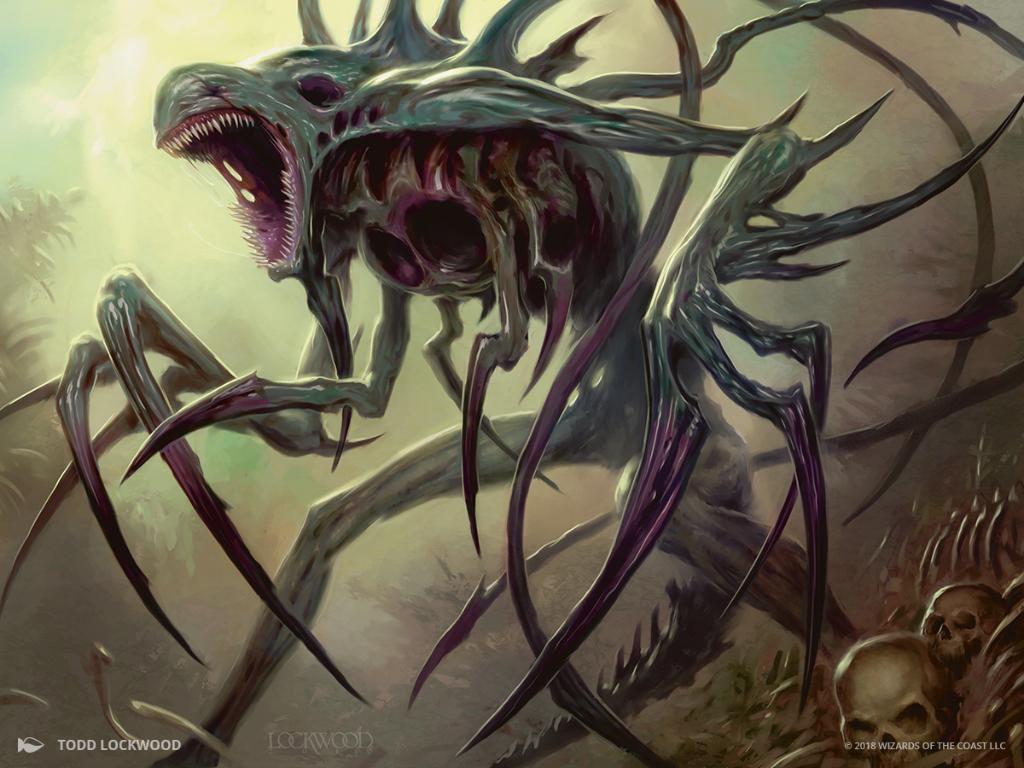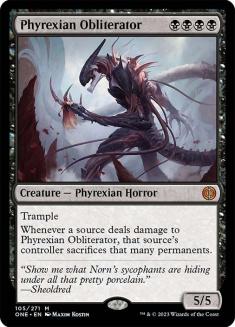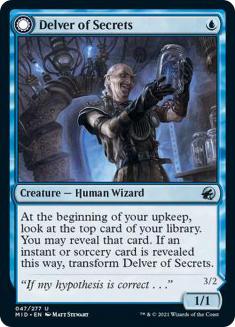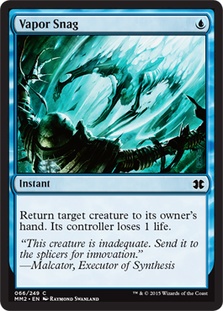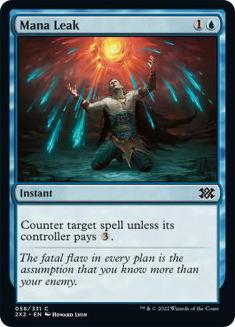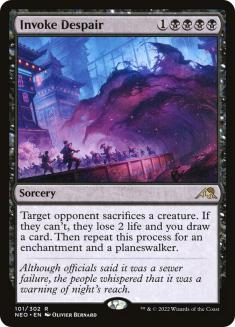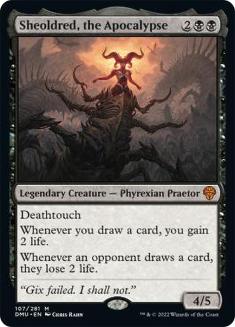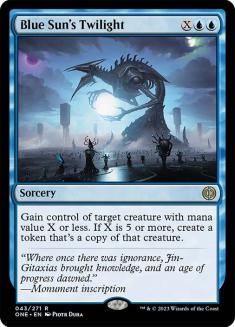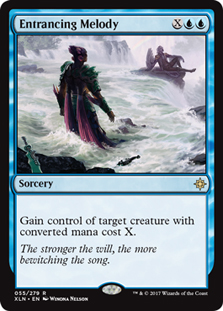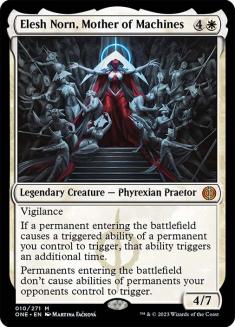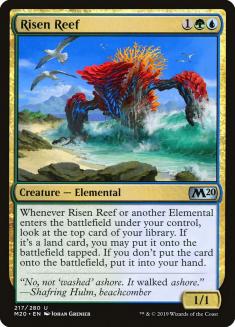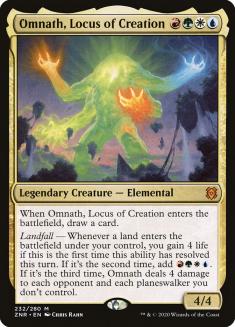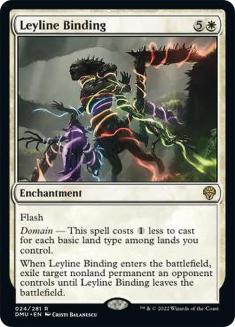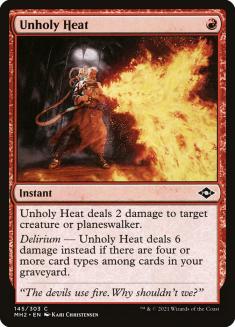This week got our first taste of Phyrexia: All Will Be One previews to whet our appetite over the holiday season. We saw one of the flashy, flagship mythics of the set – as well as a reprint requested for more than a decade.
Phyrexian Obliterator Returns
Phyrexian Obliterator is a fan favourite finally seeing a long-awaited reprint and another stint in Standard. New Phyrexia was a disaster of a set in many ways, but Obliterator stands out as one of its triumphs – an iconic creature that’s catnip to a certain type of player and does something unique and impressive in an eye-catching way. Mono-Black anything has a dedicated fan base, and it doesn’t get more mono-black than Phyrexian Obliterator.
Unfortunately, Obliterator never made a mark in Constructed, and its hefty price tag lies in its incredible popularity elsewhere. Part of this is that Obliterator epitomizes a problem facing every card like it. Expensive, sorcery-speed creatures that don’t bring or leave behind any bonus against removal and have to get involved in combat to accomplish anything are always worse than they look, even when everything else about them looks very appealing.
That problem has only worsened over time and in both directions. The competition is stiffer now, as you can find other threats that offer insurance against removal as one of many selling points, and each format seems to have a perfect response to players foolish enough to try casting these clunky giants. If Teferi, Time Raveler and Elspeth Conquers Death didn’t scare you off permanently, something else will try again soon.
The Standard formats that Obliterator found itself in were also very hostile to it. Jace, the Mind Sculptor made Obliterator and many other cards effectively illegal until the end of its career in Standard. Once Innistrad rotated in, the outlook wasn’t much better – Vapor Snag and Mana Leak made it impossible to resolve, and Insectile Aberration could fly over it anyway. Even the Gruul Aggro decks that Obliterator threatened to trump on the ground could plow through it with Sword of Feast and Famine. There was a strong black aggro deck, but it was glad to focus on Zombie synergies with Gravecrawler and Geralf’s Messenger rather than being seduced by Phyrexian Obliterator.
Black was the dominant colour in Dominaria United Standard and is still the most popular colour with The Brothers’ War. Actual Mono-Black Aggro has fallen out of favour, but the more colourful black midrange decks keep black as their primary colour – Nathan Steuer became World Champion by building his Grixis deck to cast Invoke Despair as often as possible. Obliterator’s imposing mana cost doesn’t disqualify it – but is it worth it anyway?
Sheoldred, the Apocalypse is a Standard staple that sets the bar high for any new contender in the same colour and mana cost. Few of these black midrange decks run a full set of Sheoldred, and its legendary status is only a small part of that. If you believe that the key to these midrange fights is getting on the battlefield early and using your mana efficiently, that necessarily places a cap on how many four-drops you can play – and Sheoldred still has first refusal there.
Others try to go over the top of other midrange decks with more expensive threats like planeswalkers or Bladecoil Serpent, which opens up more slots for something like Obliterator but forces it to compete with many other tempting options. Obliterator is often a worse defensive card too – if your Esper opponent has Raffine, Scheming Seer or Ao, the Dawn Sky, your Obliterator is forced into a race it may not be equipped to win.
Ultimately, I think Obliterator will be a nice but not transformative addition to exactly Mono-Black, perhaps as a sideboard card.
A Blue Sun’s Twilight Interlude
Blue Sun’s Twilight is our first look at a cycle of callbacks to the Zeniths from Mirrodin Besieged, but the immediate comparison here is with Entrancing Melody, a strong sideboard card in mostly Mono-Blue decks that lacked other ways to deal with large, cheap creatures. This fills that exact role if you want that effect, but we need something extra to justify the jump to mythic.
The “If X is 5 or more…” clause is a safe way to cost these cards for Constructed while making them more flashy in longer games of Commander. In Standard, you won’t run it expecting to reach that point often, but those situations come up more than you’d expect – it’s easy to imagine the Mono-Blue Haughty Djinn deck using Djinn’s discount and its card filtering to find and cast this for X = 5 to swing the game in its favour.
The New Elesh Norn, Mother of Machines
The Praetors are back and scarier than ever… well, some of them. We’ve already seen Sheoldred, the Apocalypse take over Standard and Pioneer, but Vorinclex, Monstrous Raider saw marginal play despite its impressive text box, and the new takes on Urabrask and Jin-Gitaxias fell flat. Where do these six Elesh Norns in a trench coat fall on that spectrum?
The Praetor theme of breaking some symmetry in an extreme way provides interesting food for thought. In general, if you think some tactic or resource is worth pushing as far as possible, you would expect many opponents to agree, making that Praetor’s second ability that much more punishing. Sometimes this is so generic that it’s unavoidable – the original Vorinclex unbalances the mana system that’s fundamental to Magic’s game engine – but mostly it’s unclear what the stakes actually are.
Sheoldred is a perfect example. If neither player is drawing additional cards, Sheoldred will still matter as a large creature that warps life totals. If even one player is trying to draw additional cards, Sheoldred suddenly becomes the focus of the whole game – but how it does that varies depending on whether you’re on Sheoldred’s side.
Elesh Norn, Mother of Machines plays similarly. One of the few challengers to Grixis in current Standard is a Mono-White Midrange deck full of cheap creatures with ‘when this enters the battlefield…’ abilities like Ambitious Farmhand and Spirited Companion, and this deck can lean harder into the theme with cards like Combat Thresher or Touch the Spirit Realm once Elesh Norn is in the picture. At that point, Elesh Norn becomes one of the scarier cards you can see across the table – and not just in the mirror. If your Esper Midrange deck is having issues in the matchup, you can turn to Elesh Norn, even if you have few ways to benefit from it yourself.
As formats grow in size, the bar for any five-drop is higher, but the bench of cards I want to pair with Elesh Norn grows deeper. My favourite Pioneer deck is a great example:
Five-Color Incarnation (Yorion) has a keen interest in Elesh Norn because of those cards in its title. Enigmatic Incarnation encourages you to play enchantments whose value isn’t tied to the enchantment itself, so you’re happy to sacrifice them, and this value usually manifests as an enters-the-battlefield effect. Yorion, Sky Nomad – in the maindeck and as a companion – wants your other permanents to follow suit. The deck has room for some five-drops in its toolbox, and Elesh Norn makes a strong case for itself there – especially if there are other Fires decks or the tribal aggro decks full of ‘when this enters…’ abilities floating around.
What about Modern? Elementals alongside Ephemerate and Yorion is a joke so old that Yorion was booed offstage already, but the other components are still popular enough that Hushbringer and Torpor Orb are common sideboard cards. You can immediately follow up Elesh Norn with Fury or Solitude, doubling up on their triggers, and it also copies other triggers from Oath of Nissa to Leyline Binding while being a great use of mana from Omnath, Locus of Creation.
The cleanest ways to remove big creatures involve these triggers – Solitude and Leyline Binding – or care about other conditions like Fatal Push or Unholy Heat. As a five-drop with seven toughness and immunity from those white removal spells, Elesh Norn is shockingly difficult for many Modern decks to remove.
We shouldn’t lose sight of the fact that the Mother of Machines is still a five-drop that requires other cards to accomplish anything, but I can see it as a useful tool for Elementals lists or other creature toolbox decks that can find it with Eladamri’s Call or Chord of Calling.
It will be 2023 before we know much more about the set – officially, anyway – but this first teaser is a fine start.

